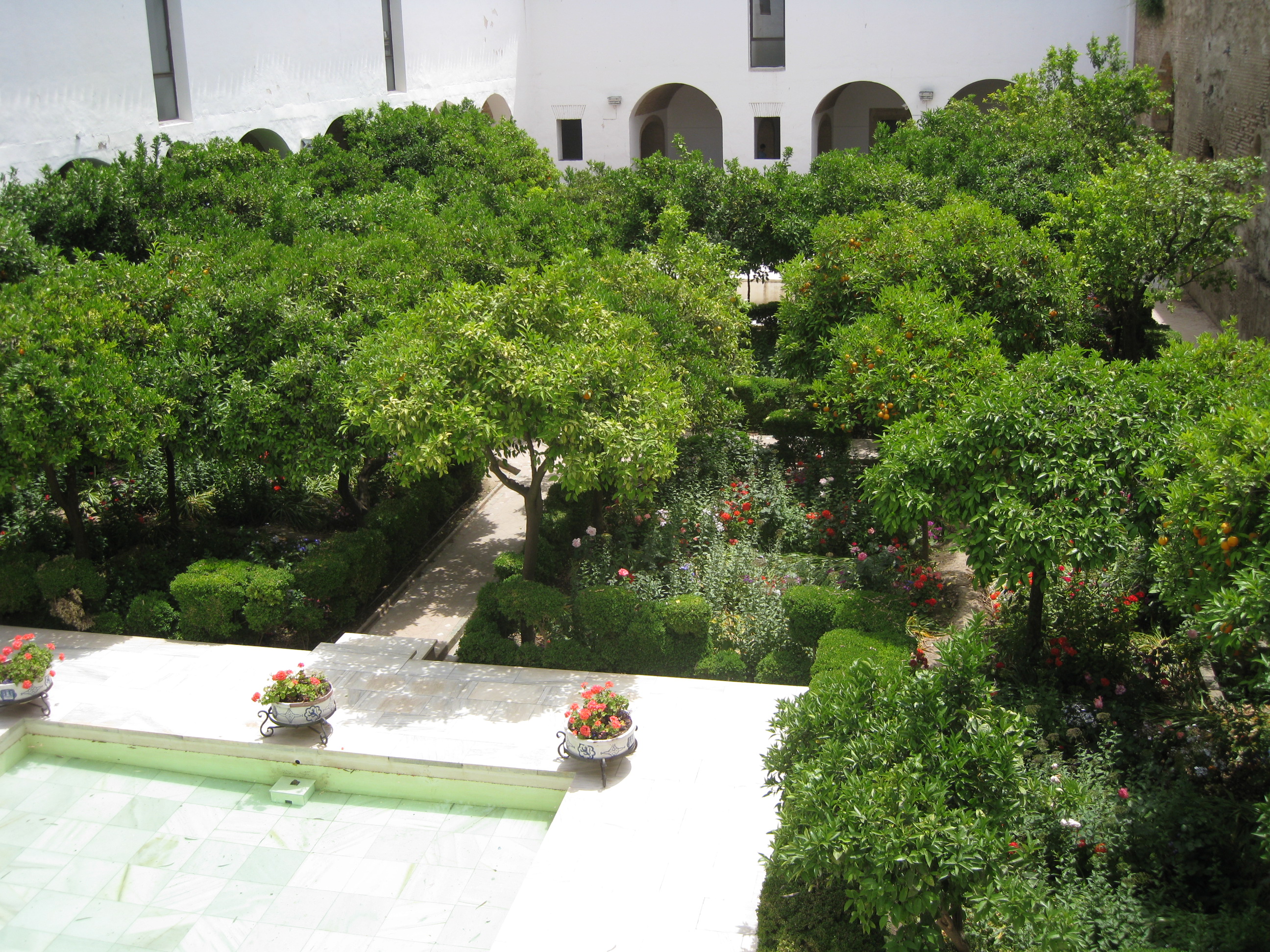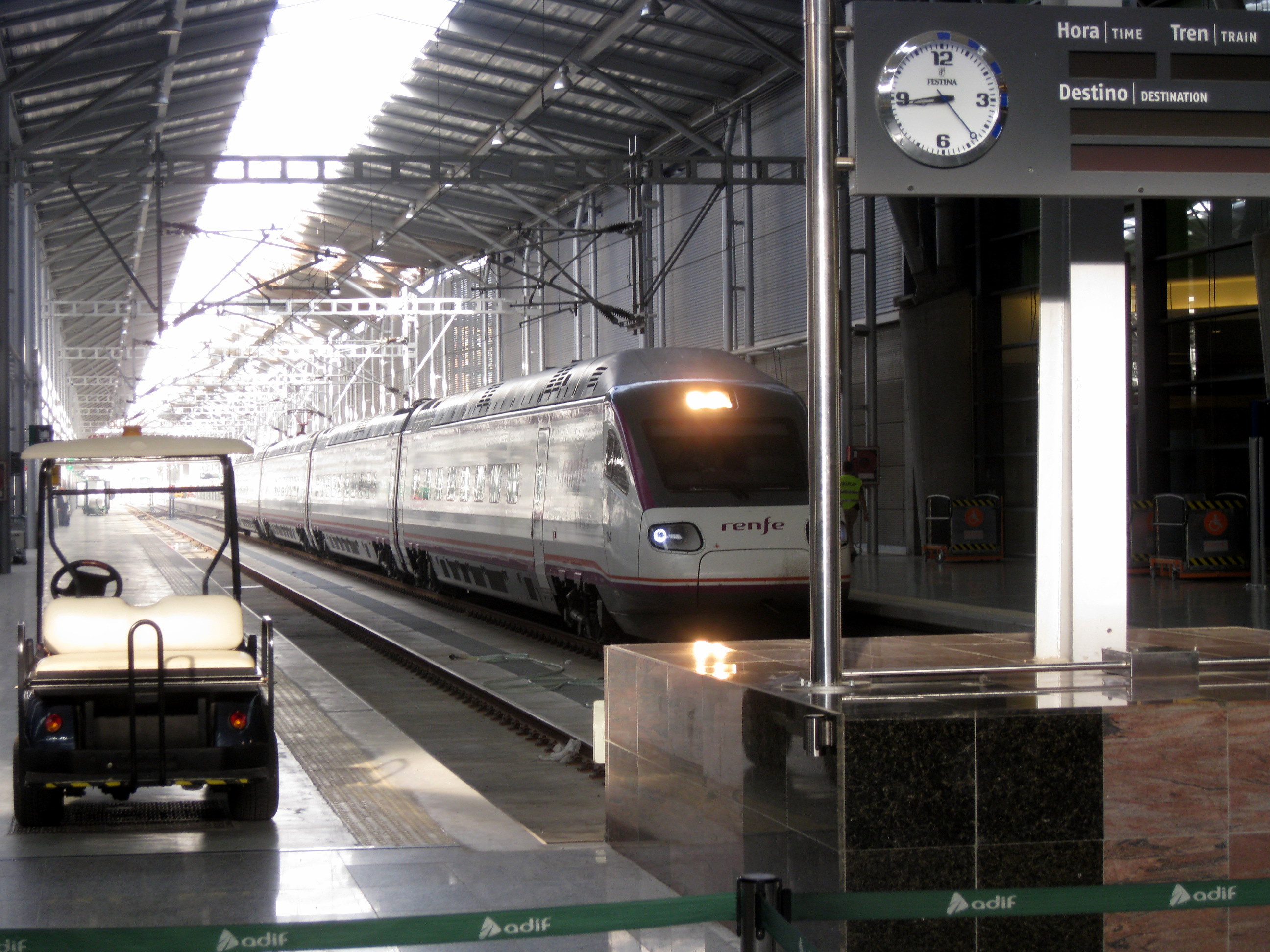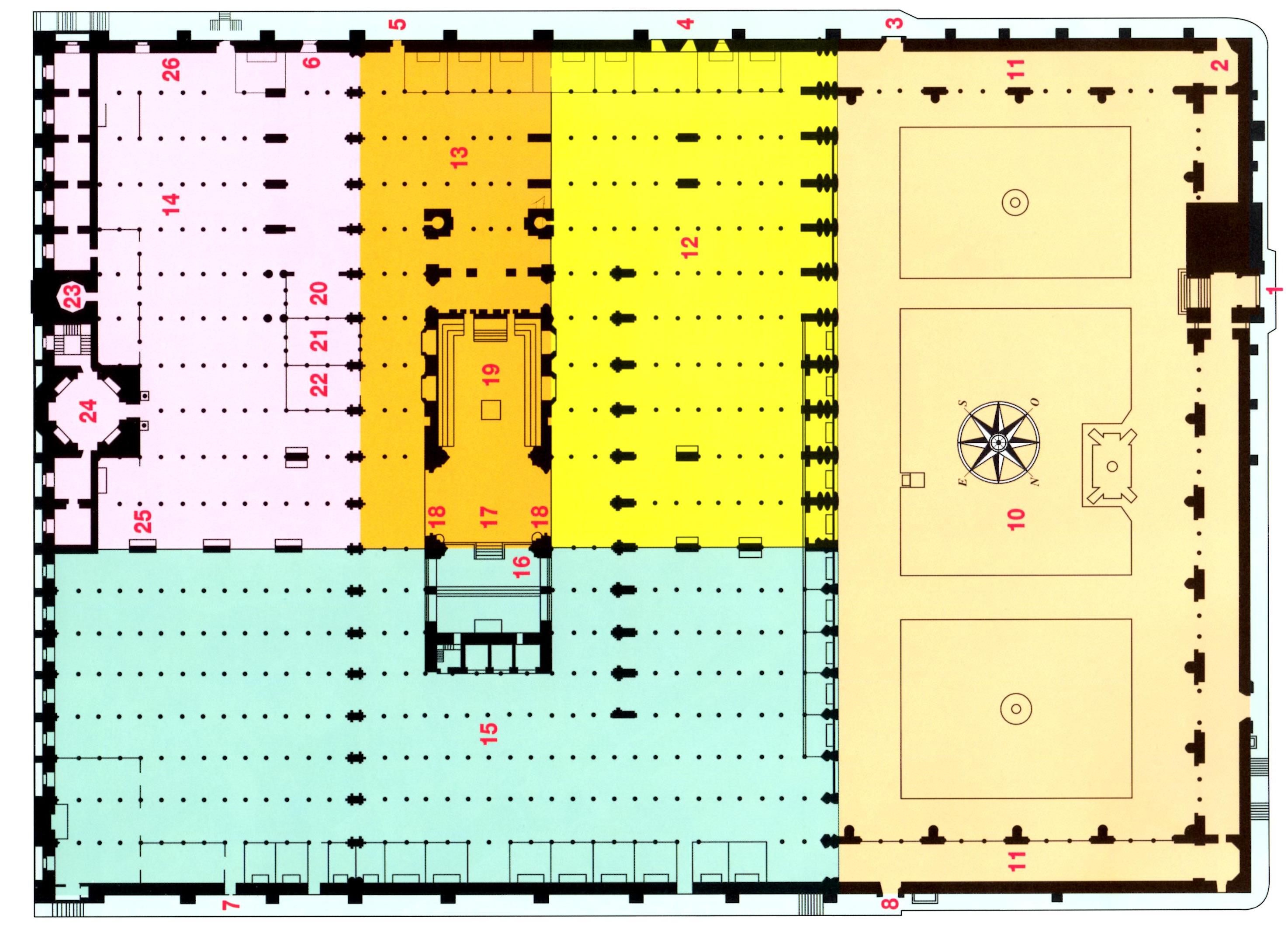CATHEDRAL QUEST
Our quest to experience the great cathedrals and churches of Europe
SPAIN
2009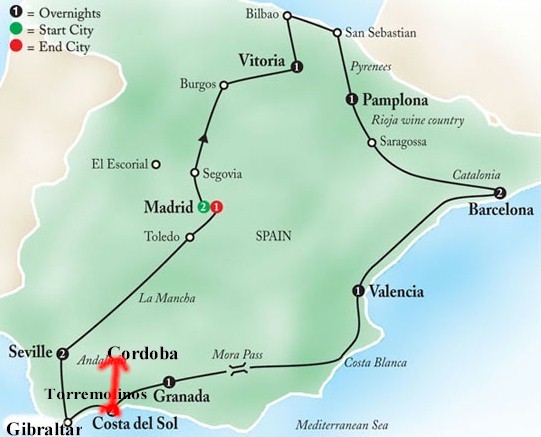
Day 11 May 20 Wednesday
TORREMOLINOS to CORDOBA
Today
was a free day.
We had planned some
months ago to go to Cordoba since the tour was not going there, and we really
wanted to see the Mosque/Cathedral.
We
had bought our train tickets on the internet site several weeks before we left.
Our plan was to take a taxi up the hill to the train station that we
visited yesterday and take the train to Malaga.
An earlier desk clerk in the hotel said that that was the best way to get
to Malaga.
We mentioned our plans to
another desk clerk later in the day and he said that train wasn’t running
anymore due to construction.
You
would think that a staff in a large hotel like that would know about a train not
running.
Also yesterday the desk clerk said that if we brought our laundry in early in the morning they could get it back to us by late afternoon. When we took the laundry there was some question about us getting it back the same day. The head of the laundry was standing there and personally took it.
Because we couldn’t be sure of the status of the train to Malaga, we decided to take a taxi all the way to Malaga. It only took a half hour in rush hour traffic. It cost about 25 Euros. We had a little time to wait until the train left. We took the Avant train which is very fast but not as fast as the Ave train which reaches speed of 300 mph. It took about an hour to reach Cordoba. We travelled through a lot of long tunnels through the mountains.
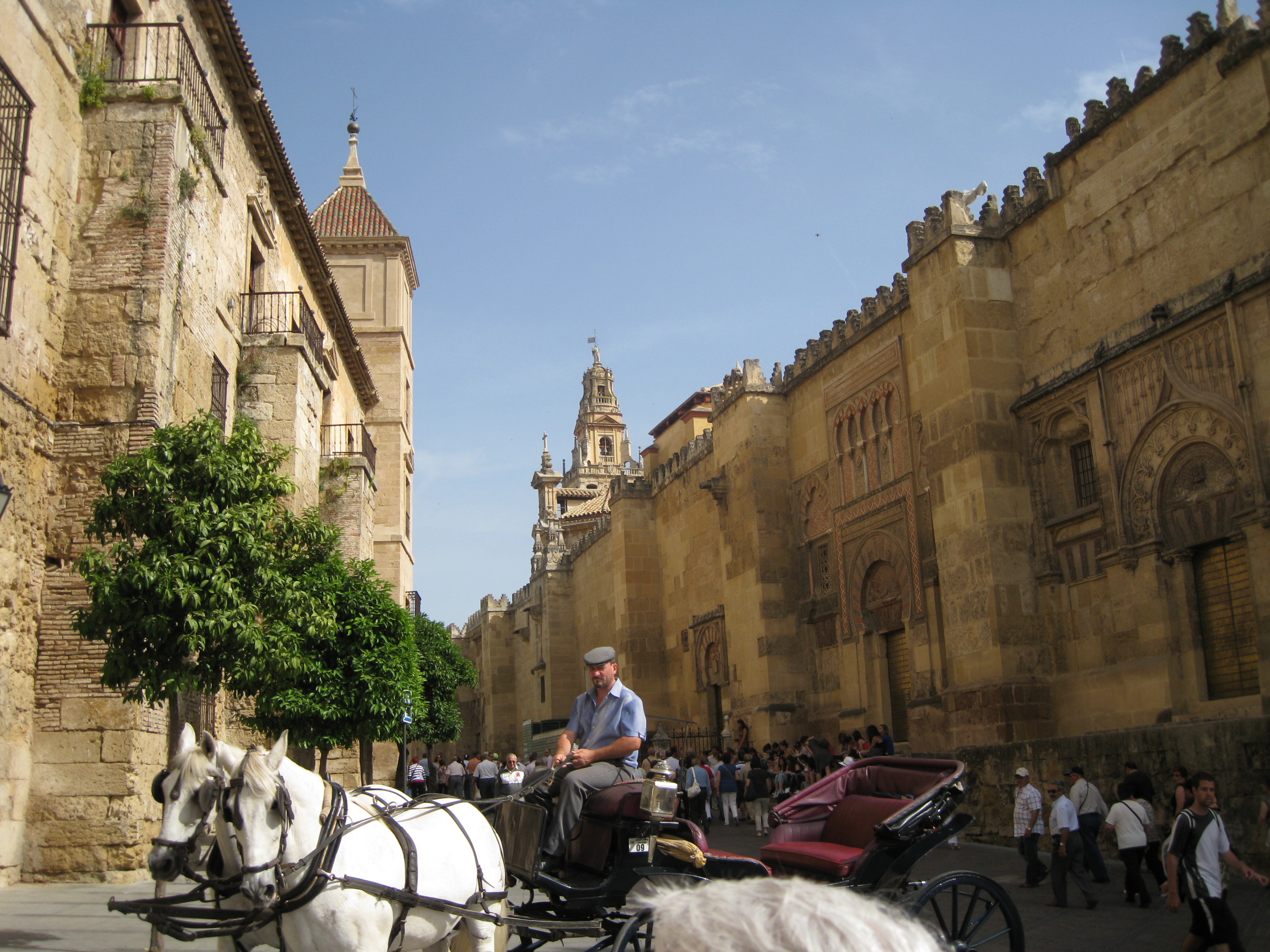 Ten
centuries ago Córdoba was the capital of Muslim Spain. With a population of
900,000, it was Europe's largest city and a worldwide cultural and intellectual
center. Later, hordes sacked the city, tearing down ancient buildings and
carting off many art treasures. Despite these assaults, Córdoba still retains
traces of its former glory -- in fact, of the three great medieval cities of
Andalusia, Córdoba best preserves its Moorish legacy.
Ten
centuries ago Córdoba was the capital of Muslim Spain. With a population of
900,000, it was Europe's largest city and a worldwide cultural and intellectual
center. Later, hordes sacked the city, tearing down ancient buildings and
carting off many art treasures. Despite these assaults, Córdoba still retains
traces of its former glory -- in fact, of the three great medieval cities of
Andalusia, Córdoba best preserves its Moorish legacy.
Today
this provincial capital is known chiefly for its
mosque, the world-famous
Mezquita,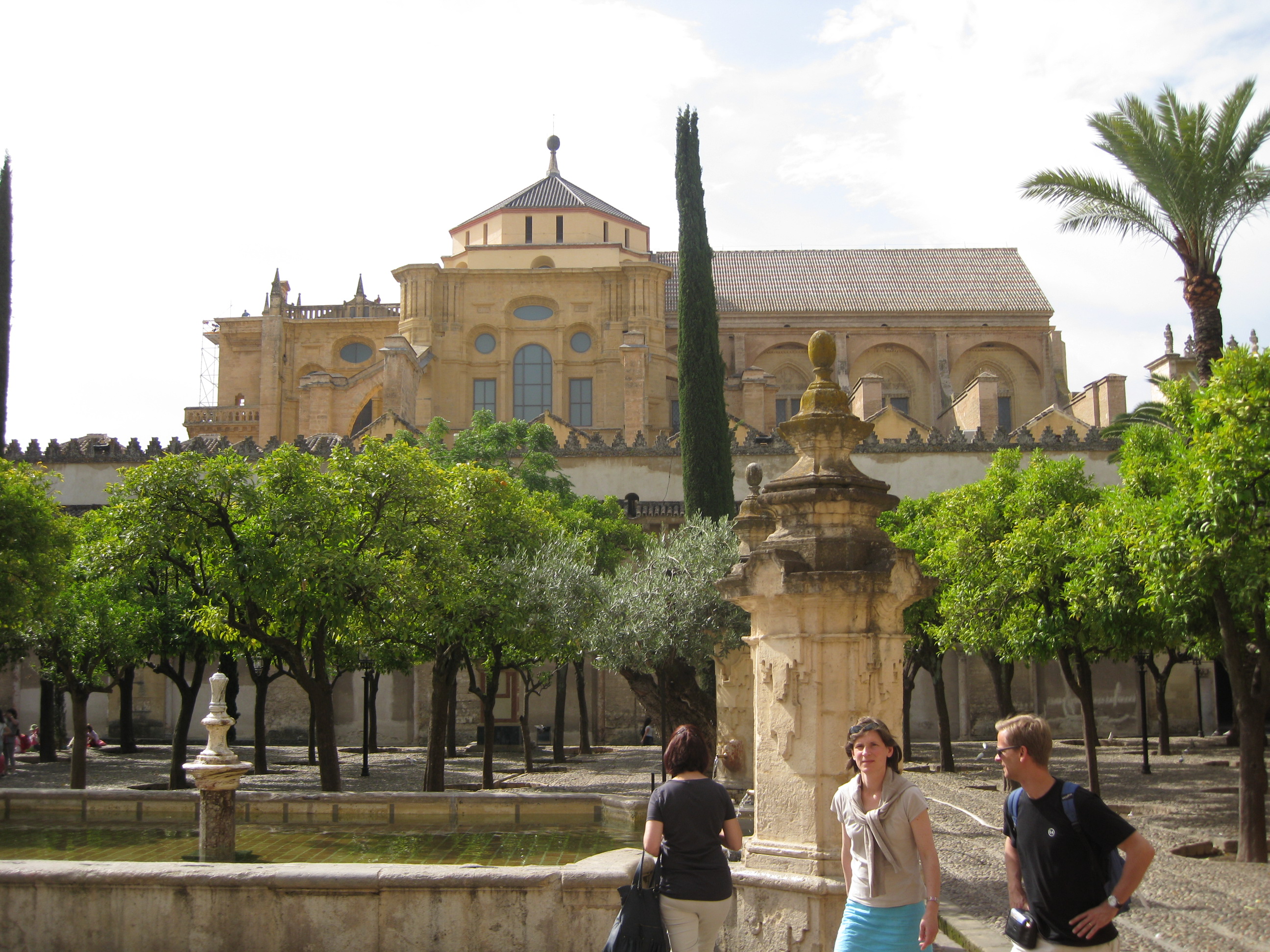 but it abounds with other artistic and architectural riches. From the 8th to the
11th centuries, the Umayyad caliphs brought an opulent lifestyle and great
learning and culture to Córdoba while most of the rest of Europe languished in
the Dark Ages. In those days, Córdoba -- not Madrid -- was the capital of
Iberia. In its heyday, a pilgrimage to the Great Mezquita in Córdoba by a
Muslim was said to have equaled a journey to Mecca.
but it abounds with other artistic and architectural riches. From the 8th to the
11th centuries, the Umayyad caliphs brought an opulent lifestyle and great
learning and culture to Córdoba while most of the rest of Europe languished in
the Dark Ages. In those days, Córdoba -- not Madrid -- was the capital of
Iberia. In its heyday, a pilgrimage to the Great Mezquita in Córdoba by a
Muslim was said to have equaled a journey to Mecca.
We
took a taxi from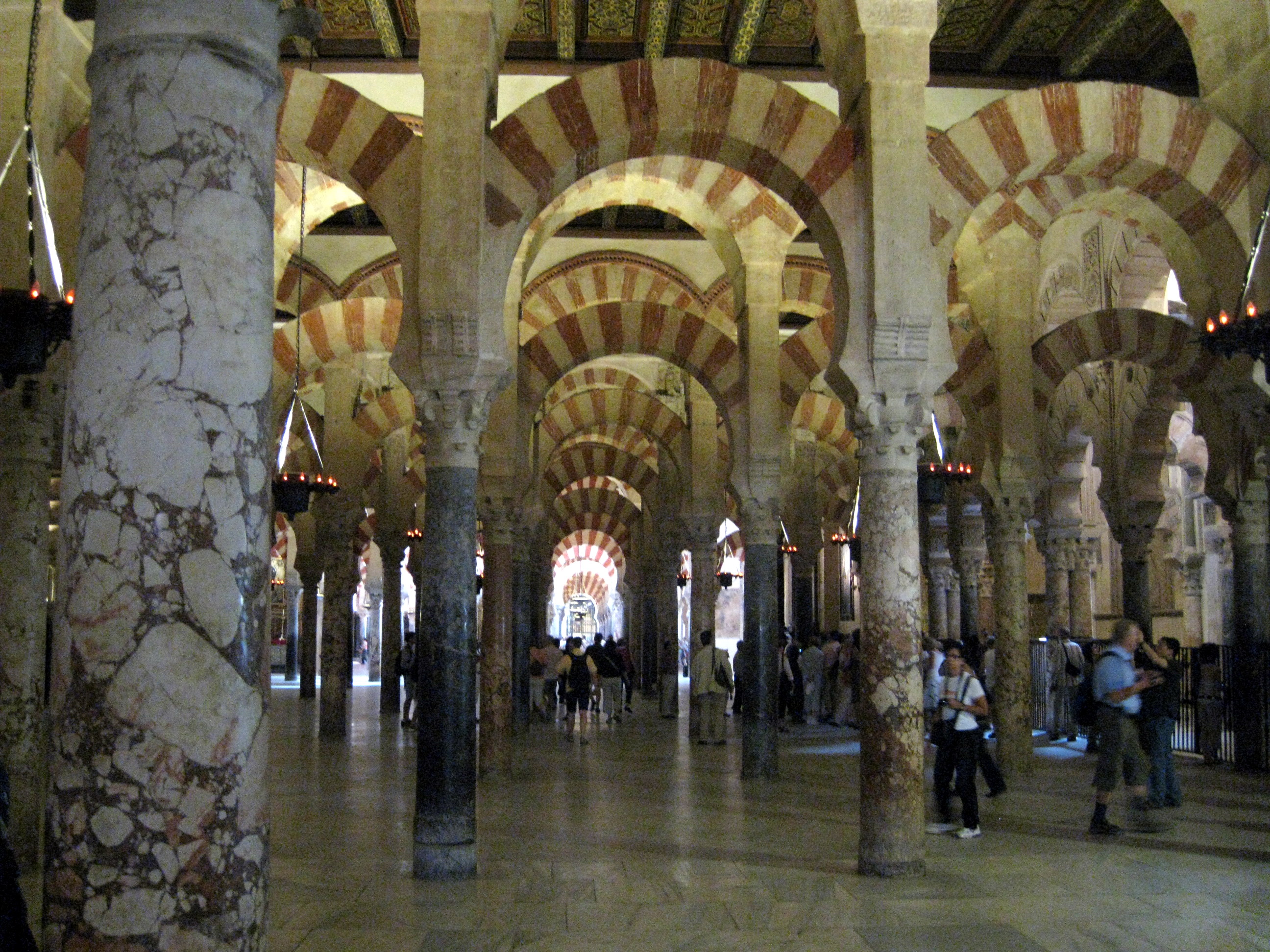 the train station to the
Mosque/Cathedral
for 5 Euros.
We bought our tickets and rented audio guides.
The interior was unbelievable.
We
were certainly glad that we had read our book on Moorish Architecture before
seeing this wonderful place.
This
was one of the highlights of our trip.
We don’t know why Globus didn’t include this on their itinerary rather
than Torremolinos.
In discussing
this later with Kaye, she said that they used to go to Cordoba
but
people didn’t like it and wanted to stay longer at the beach.
What a pity!
We were
the only ones on our trip who went to Cordoba.
Some people had no idea about Cordoba and the Mosque/Cathedral.
the train station to the
Mosque/Cathedral
for 5 Euros.
We bought our tickets and rented audio guides.
The interior was unbelievable.
We
were certainly glad that we had read our book on Moorish Architecture before
seeing this wonderful place.
This
was one of the highlights of our trip.
We don’t know why Globus didn’t include this on their itinerary rather
than Torremolinos.
In discussing
this later with Kaye, she said that they used to go to Cordoba
but
people didn’t like it and wanted to stay longer at the beach.
What a pity!
We were
the only ones on our trip who went to Cordoba.
Some people had no idea about Cordoba and the Mosque/Cathedral.
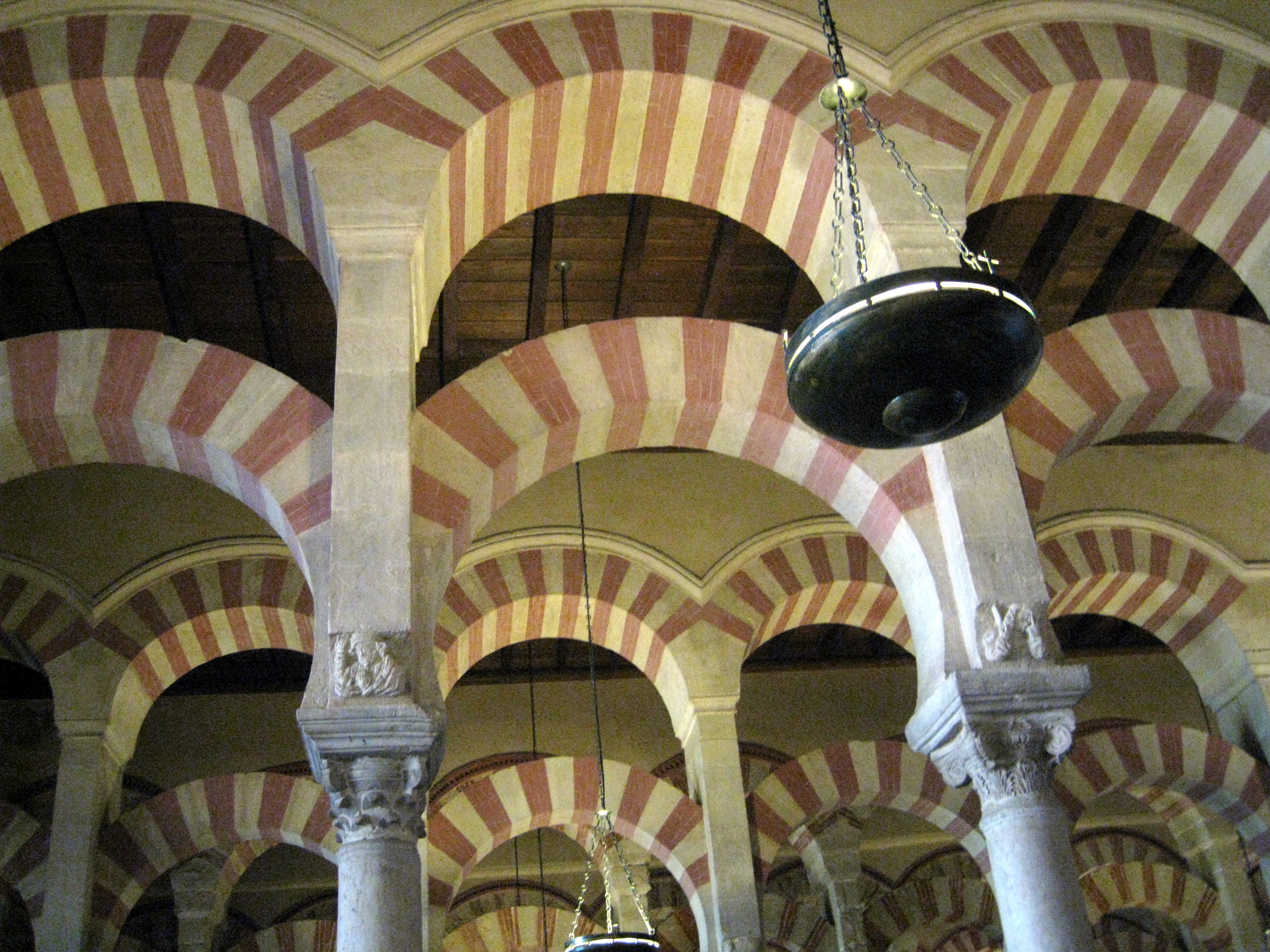
In
the 8th century, this Mezquita (Great Mosque) became the crowning glory of
Muslim architecture in the West. With its fantastic labyrinth of red-and-white
candy-striped Moorish horseshoe arches, it remains one of the grandest
attractions in Europe. Not even the Catholic cathedral placed in its center can
destroy the impact of this "forest" of architectural pillars.
The caliph of Córdoba, Abd el-Rahman I, built this place of worship in 785. To do so, he razed an earlier Visigothic basilica, which itself had replaced a Roman temple. Initially, the Great Mosque covered 251,000 sq. ft.
 Before
the Catholic takeover, the mosque had a total of 900 pillars. Remarkably,
856
pillars are still standing. Their red and white peppermint stripes are
formed in large part by white stone and redbrick voussoirs. The pillars are also
built of onyx, granite, marble, and jasper, filling a total of 19 aisles. A
second row of arches set above the first almost doubles the height of the
ceiling. Some of the most interesting pillars came from the ancient Visigothic
basilica. These had impressive carvings on their capitals. Since some of the
pillars brought in were taller than others, they had to be sunk into the floor
of the mosque. The oldest known pillar came from Egypt and dates from the reign
of Amenophis IV.
Before
the Catholic takeover, the mosque had a total of 900 pillars. Remarkably,
856
pillars are still standing. Their red and white peppermint stripes are
formed in large part by white stone and redbrick voussoirs. The pillars are also
built of onyx, granite, marble, and jasper, filling a total of 19 aisles. A
second row of arches set above the first almost doubles the height of the
ceiling. Some of the most interesting pillars came from the ancient Visigothic
basilica. These had impressive carvings on their capitals. Since some of the
pillars brought in were taller than others, they had to be sunk into the floor
of the mosque. The oldest known pillar came from Egypt and dates from the reign
of Amenophis IV.
In
the very heart of the Mezquita lie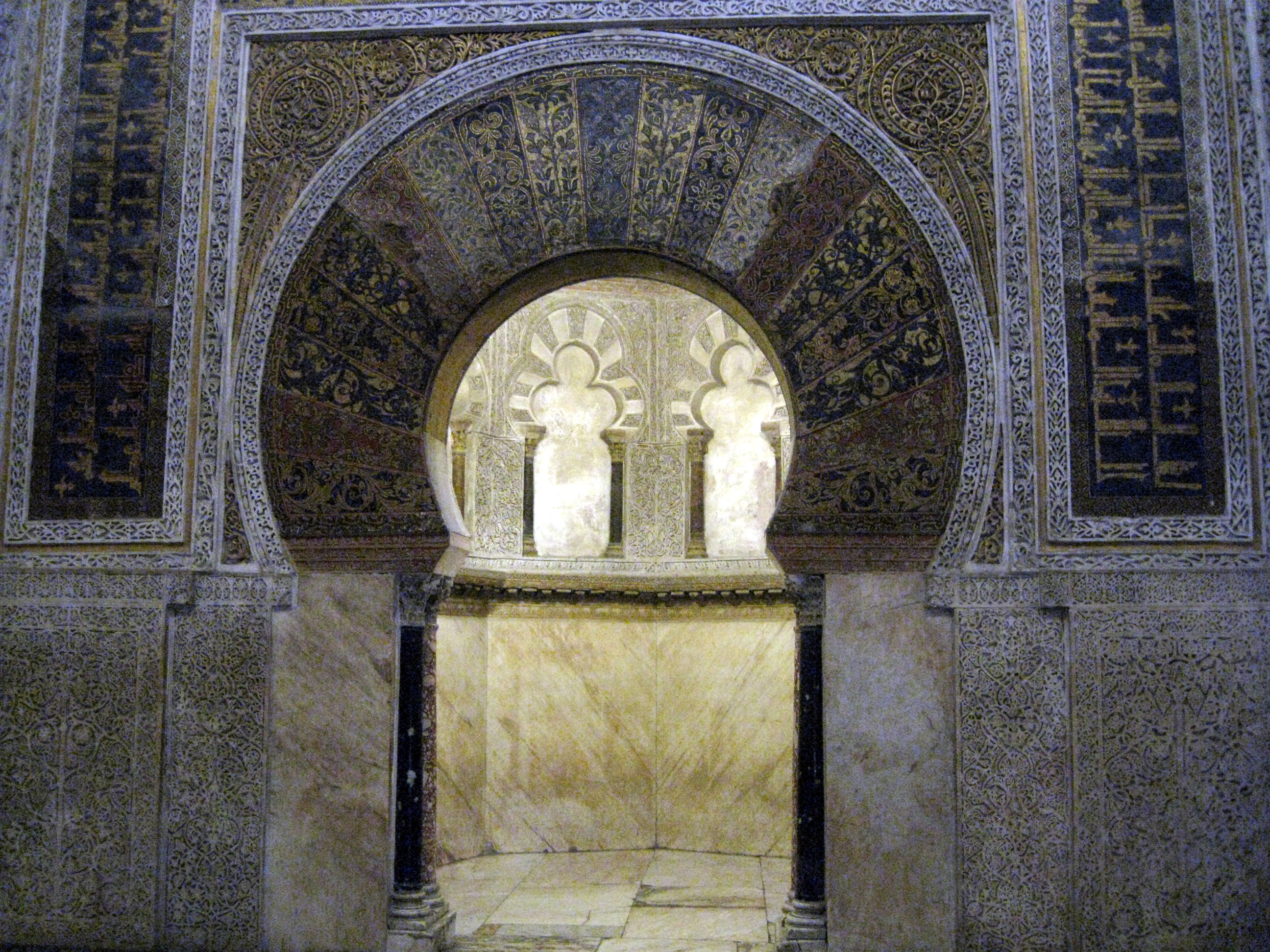 s the Mihrab, where the faithful gathered for
ritual prayers. The Mihrab was the
holy sanctuary where the Koran was kept. It was also said to have another
precious treasure: a bone from the arm of the prophet Muhammad. The bejeweled
Koran was copied by the caliph's own hand and anointed with his blood. This
sanctum is covered by a scallop-shaped dome, which
s the Mihrab, where the faithful gathered for
ritual prayers. The Mihrab was the
holy sanctuary where the Koran was kept. It was also said to have another
precious treasure: a bone from the arm of the prophet Muhammad. The bejeweled
Koran was copied by the caliph's own hand and anointed with his blood. This
sanctum is covered by a scallop-shaped dome, which
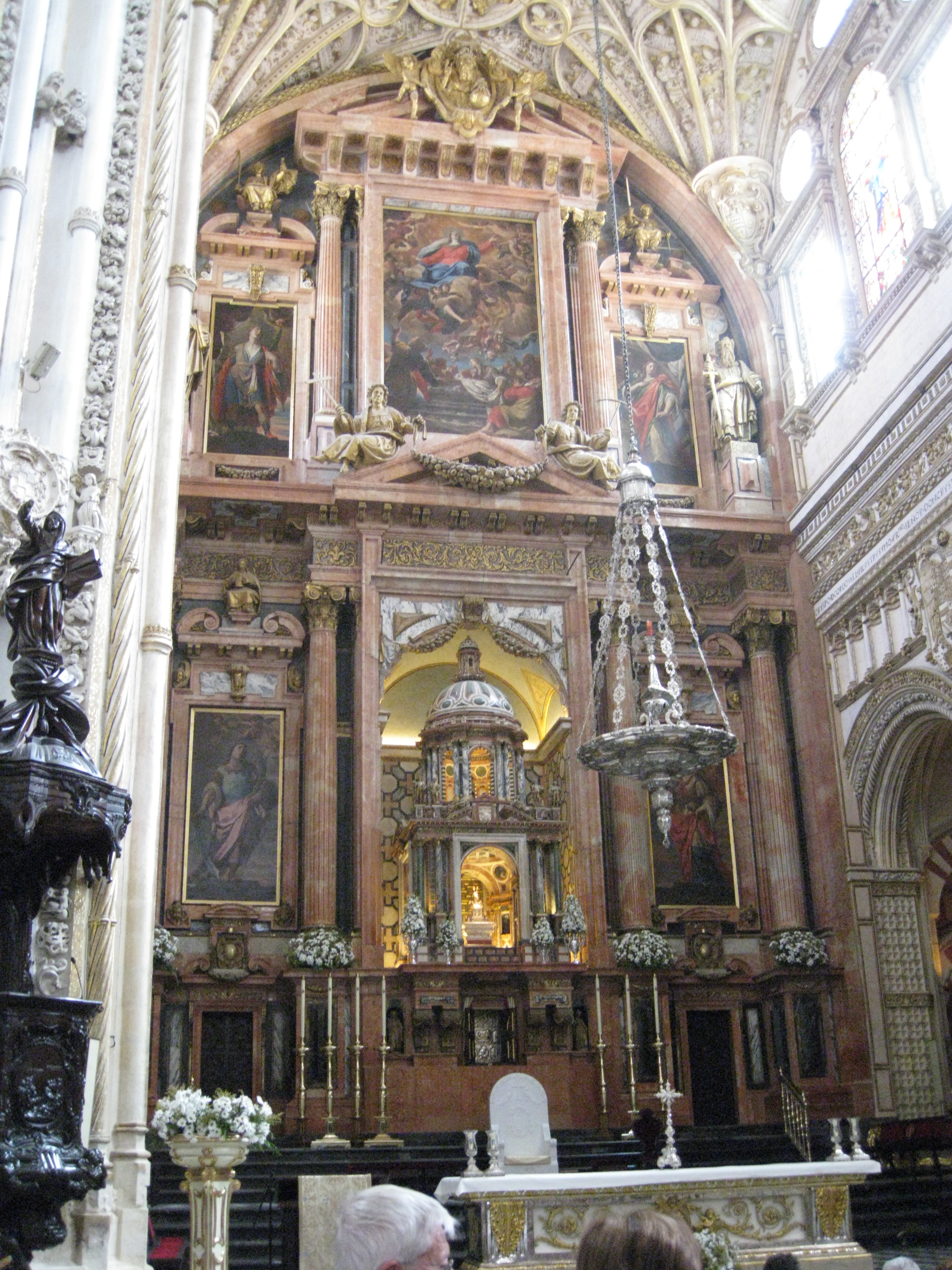 is richly decorated with
beautiful colored mosaics and gilded tiles.
is richly decorated with
beautiful colored mosaics and gilded tiles.
Although
the people of Córdoba rallied against the idea, Emperor Carlos V ordered that
part of the mosque be torn down to make way for the Catedral, which disfigured
the mosque. Later he regretted his decision, saying to his architects,
"What you are building here
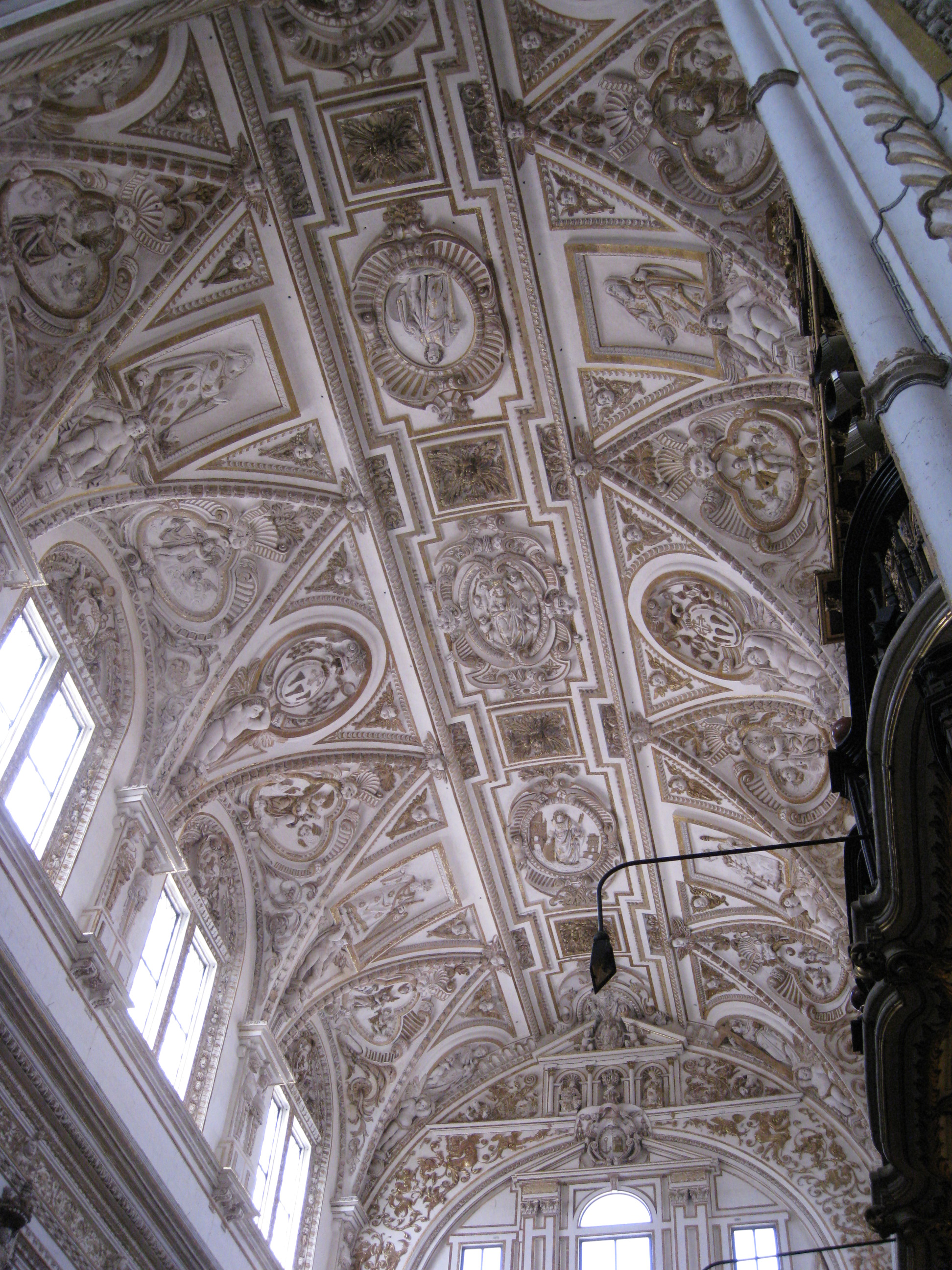 can be found anywhere, but what you have
destroyed exists nowhere."
can be found anywhere, but what you have
destroyed exists nowhere."
Construction
began in 1523 in the Gothic style, although later additions were in the
Plateresque and baroque styles, and even the Renaissance shows up in decorative
figures in the medallions in the apsidal vaulting in 1560.
The floor plan on the left shows the development and extensions of the mosque.
The yellow area (#12) was the earliest part, built in 786 by Abd-ar-Rahman I.
The gold area (#13) was an extension with 80 columns by Abd-ar-Rahman II in 832.
The next extension is the pink area (#14) by Al-Hakam III in 962. He added 190 large columns, 24 mid size columns and 84 small columns in the dome.
This was followed by the Aisles of Almanzor in 987. This extension in the green area (#15) added 8 aisles and 356 new columns.
The cathedral can be seen in the middle, built partly in the gold and green areas.
The Mihrab is the small area (#23) on the right side of the pink area. Each small dot on the floor plan represents a column.
The light tan area on the right side of the plan (#10) is the Orange Tree Courtyard.
CLICK HERE TO SEE MY MODEL WHICH INCLUDES A VIEW OF ARCHES
We
stayed in the Mosque/cathedral over two hours.
We had lunch at Burger King which was just across the street from the
entrance.
You can’t escape
the American quick hamburger joints.
It
did taste good.
We
headed off in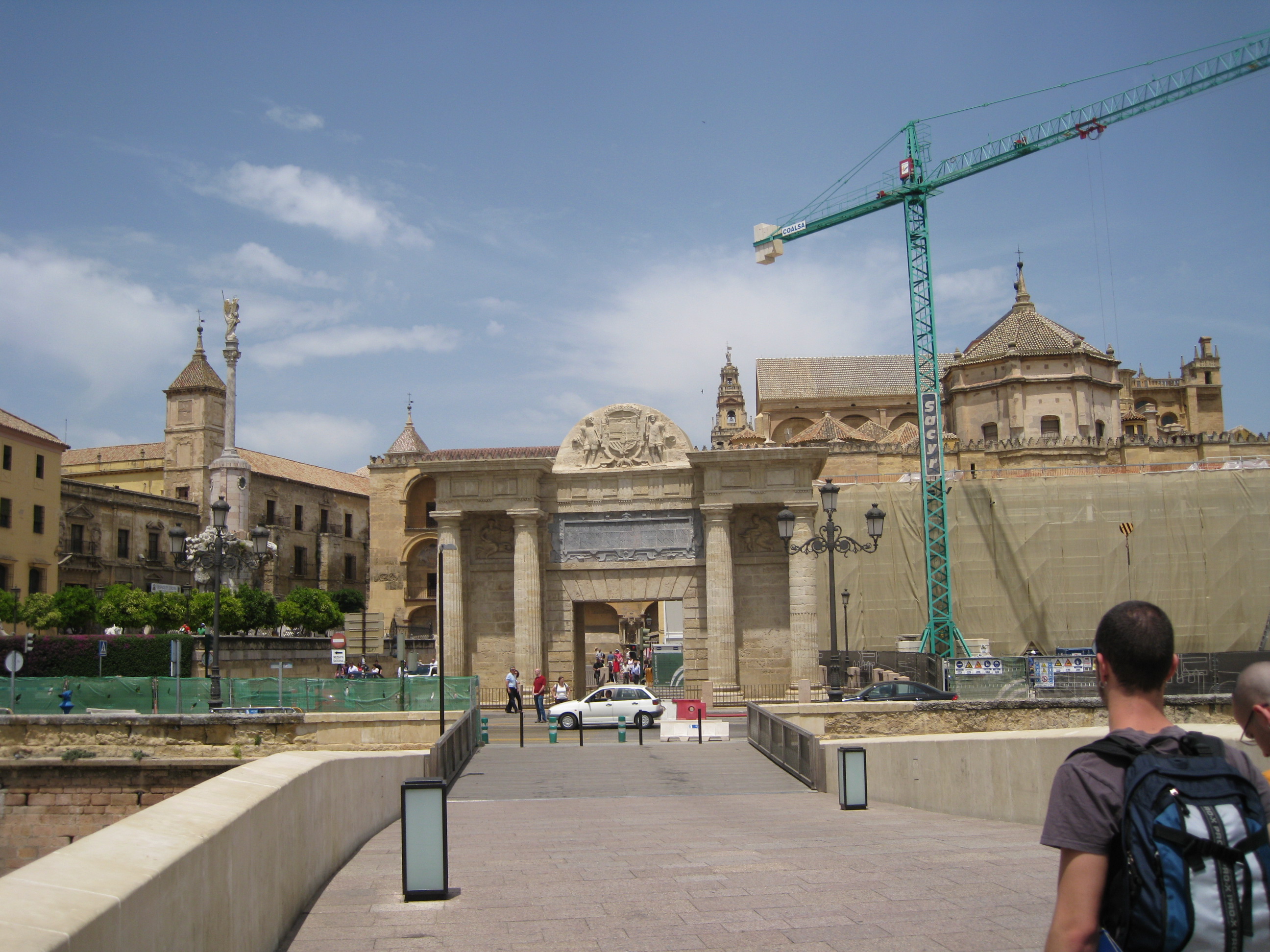 the direction of the Roman bridge, but took a wrong street
somewhere and ended some blocks from the bridge.
Then we just followed the river and found it without difficulty.
We walked down past it looking for the entrance to the Alcazar but we ran
into construction.
So back to the
bridge, through a Roman arch and towards the Mosque/Cathedral and found the
Alcazar.
Our book said it was
closed for siesta, but it wasn’t and they were allowing people in for free.
It was very beautiful and quite interesting.
the direction of the Roman bridge, but took a wrong street
somewhere and ended some blocks from the bridge.
Then we just followed the river and found it without difficulty.
We walked down past it looking for the entrance to the Alcazar but we ran
into construction.
So back to the
bridge, through a Roman arch and towards the Mosque/Cathedral and found the
Alcazar.
Our book said it was
closed for siesta, but it wasn’t and they were allowing people in for free.
It was very beautiful and quite interesting.
Commissioned
in 1328 by Alfonso
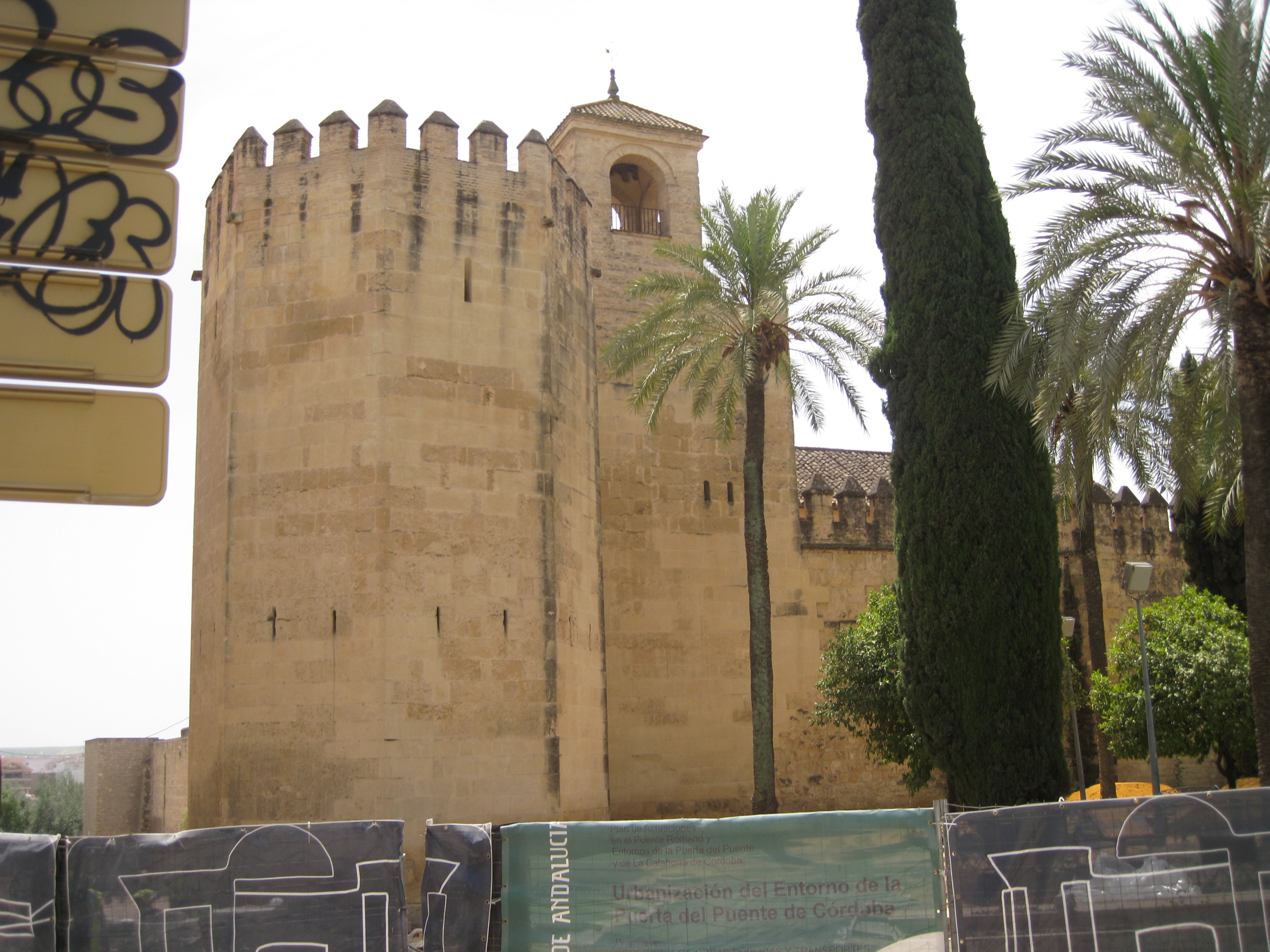 XI, the Alcázar of the Christian monarchs is a fine example
of military architecture. Ferdinand and Isabella governed Castile from this
fortress on the Río Guadalquivir as they prepared to reconquer Granada, the
last Moorish stronghold in Spain. Columbus journeyed here to tell Isabella his
plans for discovery. And it was at the Alcázar that Ferdinand and Isabella bade
Columbus farewell as he set out to chart unknown territory and discover a new
world.
XI, the Alcázar of the Christian monarchs is a fine example
of military architecture. Ferdinand and Isabella governed Castile from this
fortress on the Río Guadalquivir as they prepared to reconquer Granada, the
last Moorish stronghold in Spain. Columbus journeyed here to tell Isabella his
plans for discovery. And it was at the Alcázar that Ferdinand and Isabella bade
Columbus farewell as he set out to chart unknown territory and discover a new
world.
The
Alcázar was also the headquarters of the dreaded Spanish Inquisition for three
centuries. A former Arab bathhouse in the basement was turned into a
Counter-Reformation interrogation center.
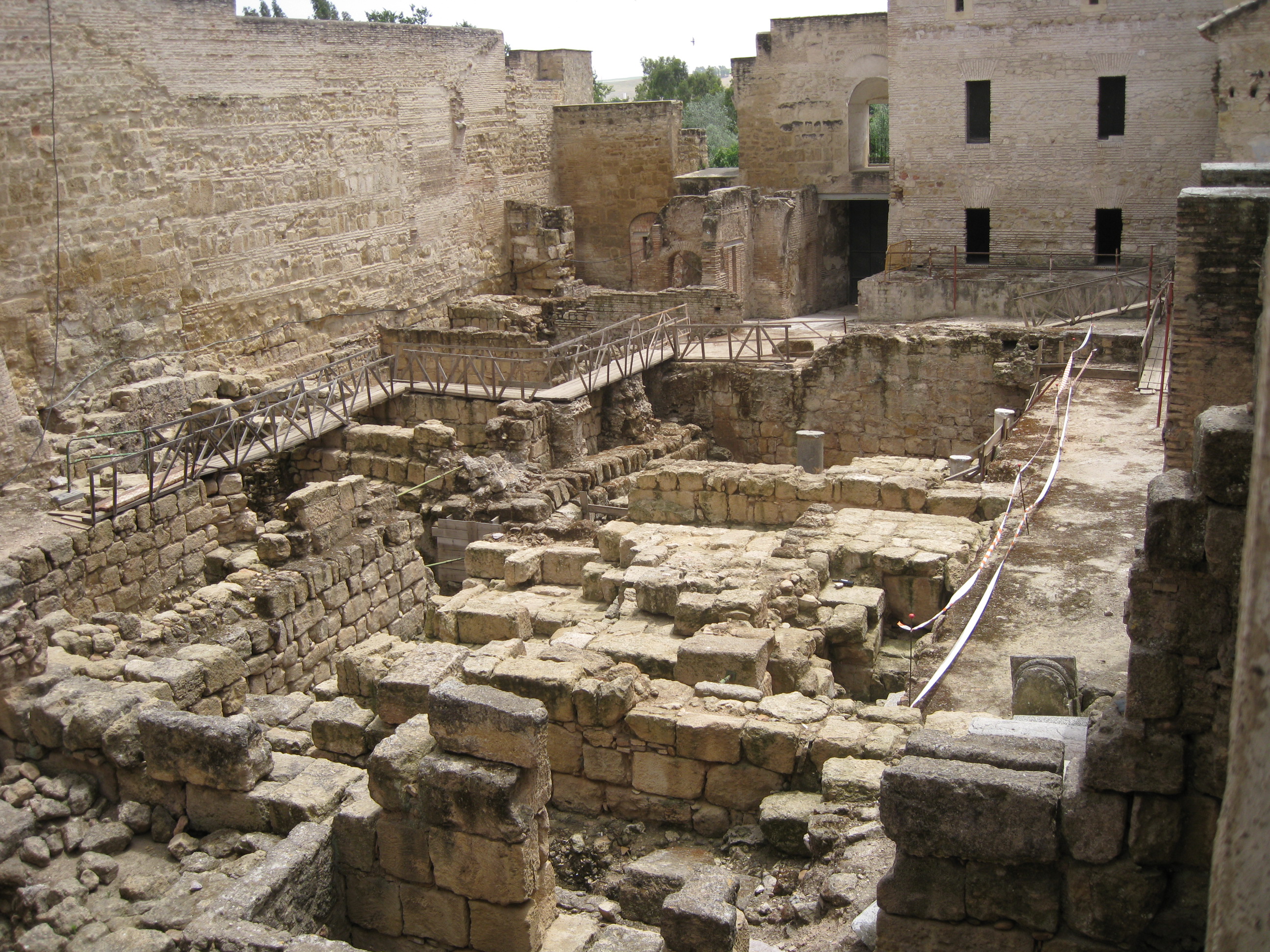
Originally,
the Alcázar (Fortress) was the abode of the Umayyad caliphs. Of their former
palace, little remains except ruins. You can see some Moorish courtyards with
ornamental basins and some cooling pools and baths. Also on view are some
impressive Roman mosaics from the
time of the Emperor Augustus.
